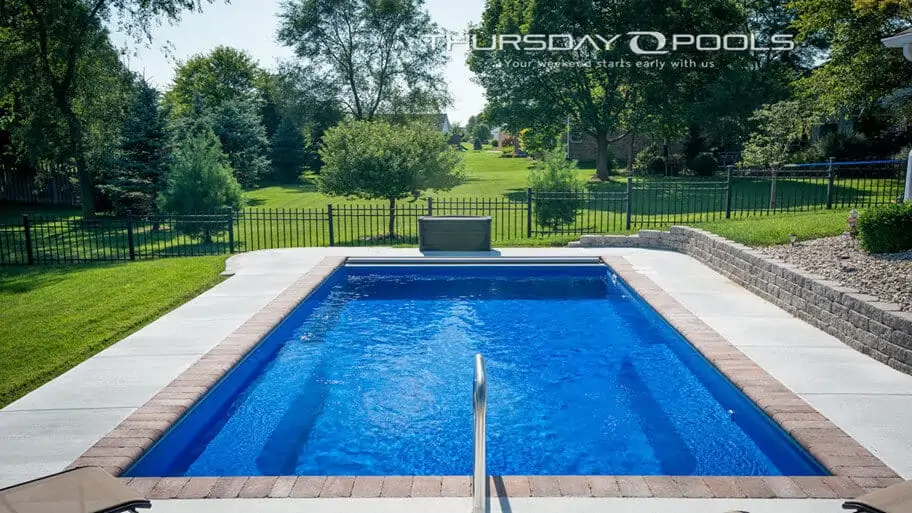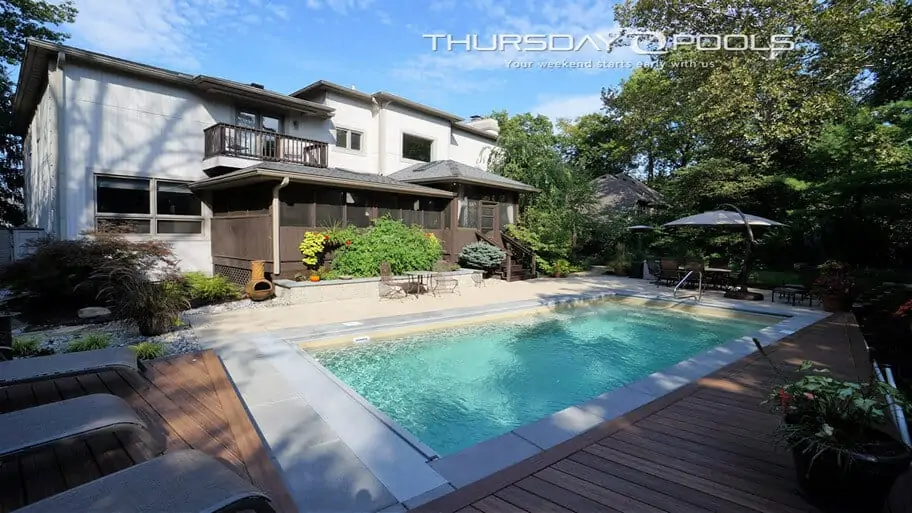I think we’re all in agreement that a cloudy pool is not a pretty sight. Not only is it unattractive, but also it signals the need to conduct maintenance on your pool.
A cloudy pool is likely the result of the presence of bacteria that can damage your pool and the equipment along with it. However, the way in which bacteria has presented it can vary, meaning there are different solutions to the problem.
So, we’re going to take you through the different problems and solutions that will eliminate the bacteria present in your pool and get rid of that cloudy appearance—hopefully for good if you continue to keep up with routine maintenance.
This is a fairly common problem—one we’ve seen hundreds of times—and the solutions are fairly simple. If you follow the directions listed in this article depending on the problem your pool is diagnosed with, you should be able to get your pool back to normal in no time!
How Does a Pool Become Cloudy?
Most of the reasons for a cloudy pool revolve around the filtration and sanitization of the pool water.
You see, the filter system is designed to remove debris and solids like sweat, sunscreen, other beauty products, and algae from the pool water and return sanitized water to the pool. When these solids aren’t properly removed, small amounts may remain in the pool and absorb the sanitizer. If this is the case, a few things can occur.
1. Low Sanitizer Level
One of the catalysts of cloudy pool water is a low level of sanitizer–specifically chlorine. As you probably know, chlorine is the chemical that keeps your pool clean, clear, and ready to swim in. When there is a lack of chlorine, bacteria is allowed to grow inside the pool, thus placing more stress on the filter system to clean it. And when the filter system has to work harder, bacteria can remain in the pool for longer periods of time, which means not only can swimmers be exposed to it, but the cloudy appearance occurs.
2. Filtration Issues
As we mentioned, debris can linger in the pool and cause the sanitizer level to deplete. And as you read above, low sanitizer can lead to lingering bacteria. It’s a trickle-down effect because the next thing these issues can lead to is a problem with the filter system.
When debris builds up in the pool, the filter’s responsibility is to remove it. Well, if the debris piles up or is too large, the filter system can become clogged or eventually die out because it’s been overworked for so long.
A clogged filter system means that no pool water can make its way through the proper sanitization process, leading to the cloudy appearance of the pool.
3. Incorrect Water Chemistry
This probably goes without saying but since cloudy water is a direct result of a low chlorine level, you can expect the water chemistry (pH and alkalinity) to be thrown off.
The pH level of the water can increase, meaning it’s less acidic than it needs to be. Therefore, scale can build up on the pool surface, making it easier for bacteria to grow and cause filtration issues.
The alkalinity level can also rise if chlorine is low, which can result in calcium buildup in the pool surface and clog the filter system.
Each aspect of water chemistry relies on the other to be at the proper level in order to keep the pool clean and clear, and as you can see, if one aspect falls out of whack, they all do.
4. Algae Buildup
The three catalysts for cloudy pool water that we listed above can lead to the final, and arguably worst, results–algae buildup.
As debris and bacteria build up in the pool, algae can thrive because the pool isn’t being cleaned in the manner that it should. When algae builds up, one of the first signs is a cloudy pool. That can eventually lead to a green pool, which requires a lengthy cleaning process. But if you catch it soon enough, you can stop a cloudy pool from progressing to something worse.
How to Eliminate Cloudiness
Now that you know the possible causes of a cloudy pool, you’re probably wondering how to get rid of the cloudiness so your pool regains its crystal clear appearance.
Below you’ll find the step-by-step process necessary to clean the pool and transform the cloudiness into the clear, blue water you are used to seeing in your pool!
1. Clean the Pool
The first step in getting a cloudy pool back to its clear, beautiful state is to give it a deep cleaning. This means, scrubbing the pool walls with a pool brush, removing debris, and then vacuuming the pool.
If you think the cloudy pool may be a result of algae buildup, you’ll want to set the filter system to “waste” so anything that is vacuumed out will not return.
2. Shock the Pool at Night
Pool shock can be a scary thing to add to your pool if you’re doing it for the first time, but trust us, it’s completely fine for the pool. And be sure to shock your pool at night; doing so will prevent the sun’s ultraviolet rays from burning off some of the chlorine and prevent it from being as effective as possible.
Pool shock contains more chlorine than standard chlorine, which is needed in a situation like this since the level is likely depleted so much that a standard amount won’t get the job done.
Adding more chlorine than normal will help eliminate the bacteria that has built up and caused the cloudiness. Sometimes, you may even need to add pool shock multiple times to get rid of the cloudiness completely.
3. Filter the Pool Water
We recommend that you turn the filter system back on after pool shock has been added. You should run the filter system for about 8 hours per day. This is enough time to allow the extra chlorine to make its way through the system and get filtered out.
*We should note that the filter should be cleaned thoroughly before turning the system back on to allow for optimal cleaning.*
4. Balance the Water Chemistry
As we noted, improper water chemistry can be one cause of a cloudy pool. Therefore, when working towards restoring it to it’s clear and proper state, balancing the pH, alkalinity, and chlorine levels is a necessary step.
We recommend adding small amounts of chemicals at one time to make sure the chemistry is as close to the exact levels as possible–and so you don’t add too much.
How to Prevent Cloudy Water from Appearing Again
Preventing cloudy pool water from arising is actually pretty simple—you just need to keep up with routine maintenance on your pool. This means checking the water chemistry 2-3 times per week, adding chemicals when needed, removing debris when it finds its way into the pool, and brushing the pool walls regularly. Doing these things will help fight algae growth, keep your filter system in working order, and keep sanitizers at the appropriate levels.
Of course, this doesn’t provide a 100% guarantee that you won’t see a cloudy or green pool, but it will greatly increase the chances of keeping your pool in the desired condition.
As always, if you have any further questions about pool maintenance or cleaning a pool, check out some of the articles below!





